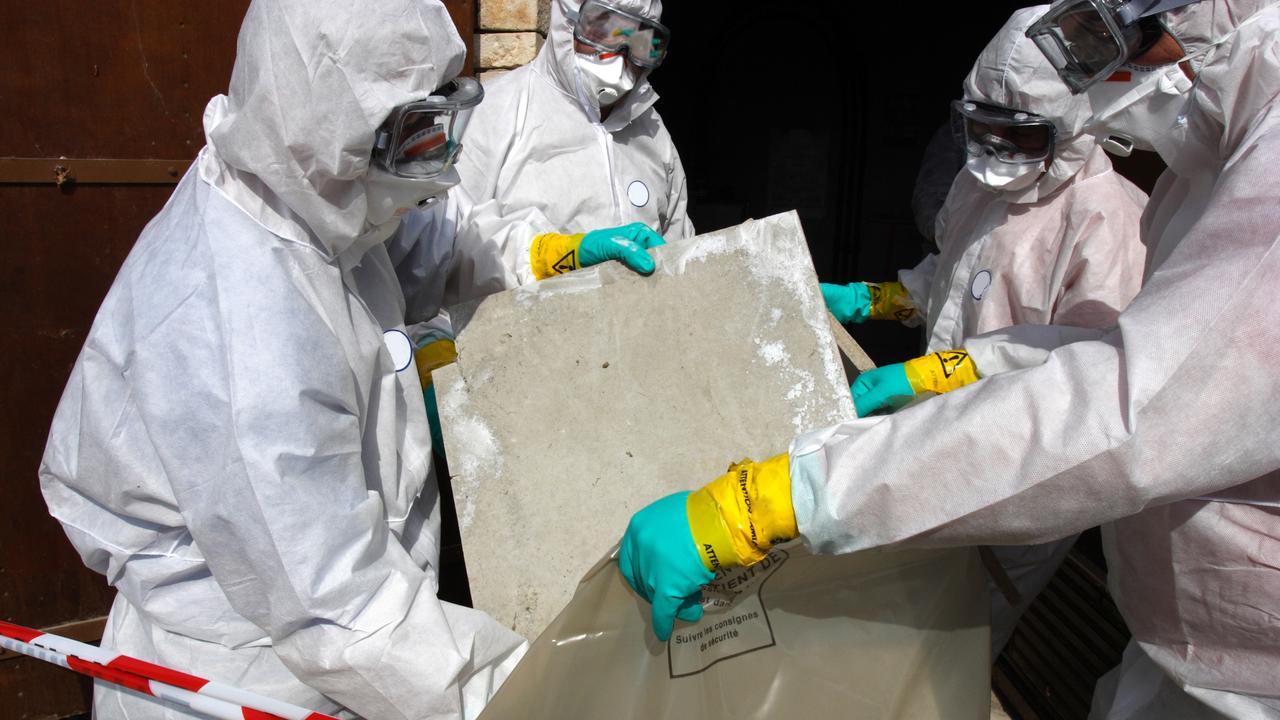National Asbestos Awareness Week: Grandad’s plea to DIY renovators over ‘invisible’ threat
Renovators have been issued a stern warning against cutting corners which could expose themselves or their family to “invisible” and deadly asbestos fibres.
Renovators have been issued a stern warning against cutting corners with DIY projects, with growing concerns renovators could be putting themselves at risk of exposure to asbestos exposure and disease.
The warning from the Asbestos Safety and Eradication Agency comes during National Asbestos Awareness Week (November 20-26), with fears growing labour costs could tempt renovators to take shortcuts.
Victorian grandfather Graeme Hamilton, 65, knows first-hand the anxiety of having potentially exposed his wife and baby daughter to the “invisible” fibres while renovating his family home in 80s.

This was prior to mass public education campaigns warning of the dangers of asbestos, before a national ban was put in place on December 31, 2003.
“We couldn’t really afford tradesmen come in, but I had a lot of friends who were tradesmen in those fields so they would tell me how to do it, and I could do it myself,” he said.
“We didn’t know anything about asbestos and I put new windows in, redid the bathroom and kitchen and cut the walls.
“My wife diligently cleaned everything up, while we had our baby girl in the other room.”
On average about 4000 Australians die from asbestos-related diseases every year, with the majority of deaths relating to contact prior to the ban coming into place.
Exposure can lead to diseases like asbestosis, mesothelioma and lung cancer, with symptoms usually appearing between 20 to 30 years after exposure.

Mr Hamilton didn’t realise he had put his family at risk until the 2000s, while doing a health and safety course for work. At the same time, his father-in-law was also dying of asbestosis.
“I just stood there dumbfounded. I know that I have a little girl and all the things I’ve been cutting, planing, painting and sanding are asbestos,” he said.
“I’m not particularly worried about me, but I wouldn’t like to think that my grandson’s mum will die earlier because she got asbestos disease.”
He’s urged renovators to heed the warnings and get professional help if there’s even the chance of asbestos exposure.
“The thing is maybe it won’t happen to you, but if it happens to your family, how will you feel?” Mr Hamilton said.
“That’s what haunts me and I just pray it doesn’t happen to my family and that no one else in the family gets sick.”

While the deadly building material has been banned for almost 20 years, Asbestos Safety and Eradication Council chair Paul Bastian warns the threat of exposure is higher in deteriorating and ageing buildings.
“Asbestos materials are now ageing and degrading, increasing the risk of releasing deadly asbestos fibres. More frequent extreme weather events such as floods and fires are also increasing the risk of asbestos exposure and contamination of the environment,” he said.
Renovators who forgo a professional asbestos assessment could put themselves and their families particularly at risk, Mr Bastian said.
“We often hear about renovators discovering asbestos after starting a project, which means they may already have exposed themselves, their family and their neighbours, as well as then having to deal with unexpected delays and costs,” he said.
“We’re calling on tradies, homeowners and anyone planning renovations, repairs, or other work on older buildings to think twice about asbestos and don’t cut corners.
“Just like plumbing and electrical work, asbestos removal is a job best left to the experts.”





